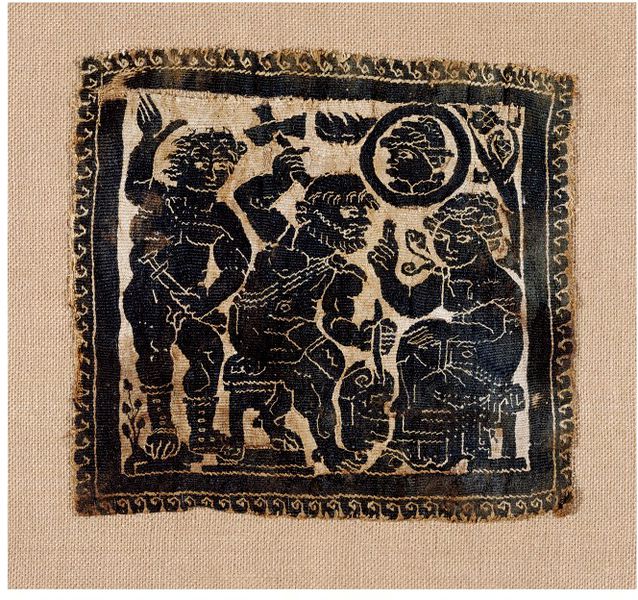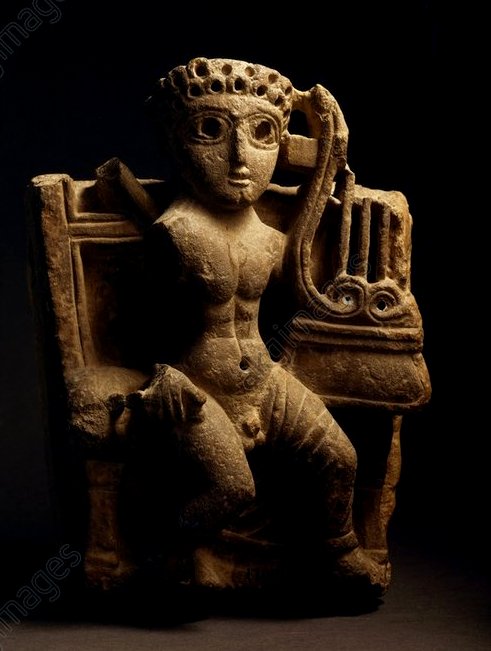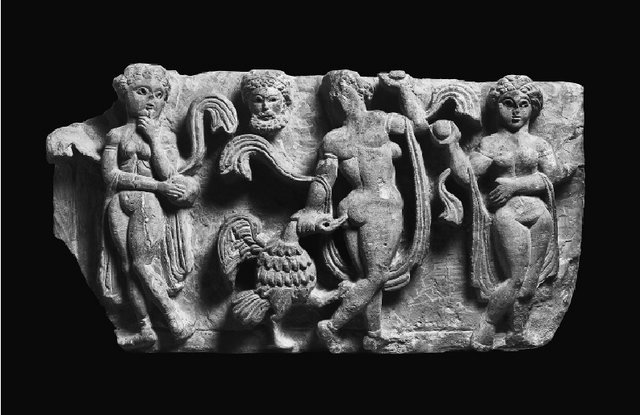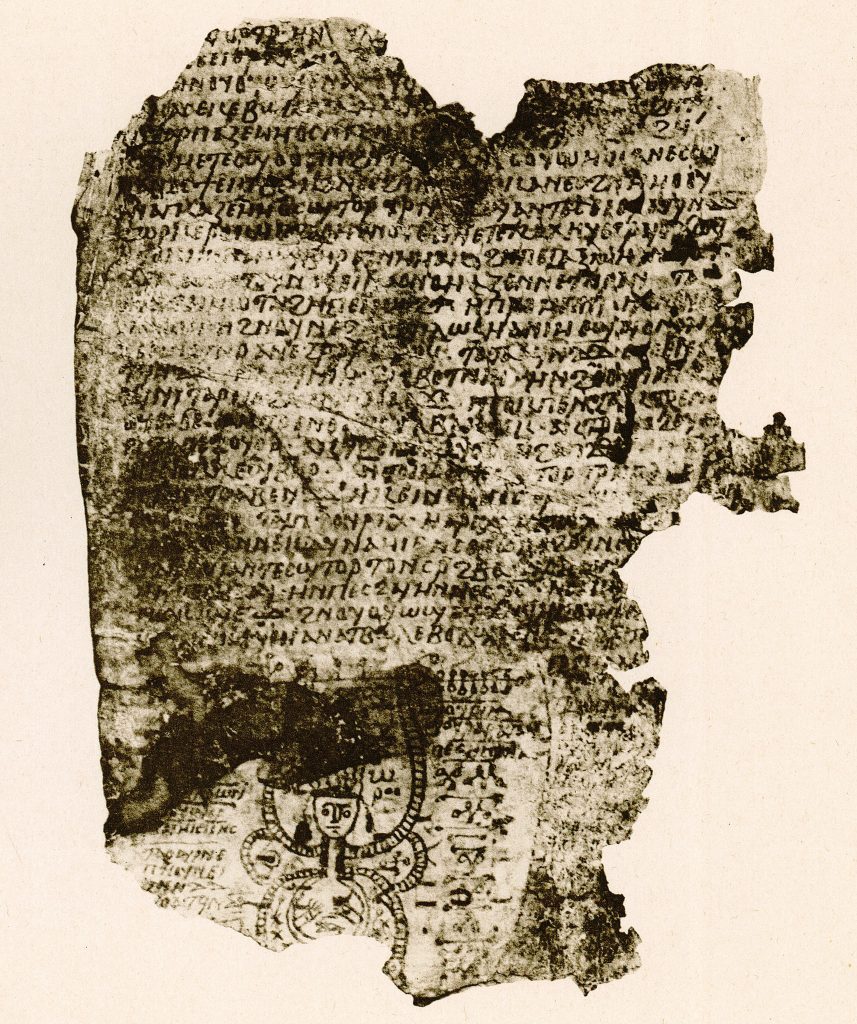
In the fifth century – the period when Christianity was settling in as the dominant religion of Egypt – Shenoute of Atripe (ca. 347-465 CE), head of a monastic federation in Upper Egypt, gave a sermon in which he attacked heretics, pagans and the orthodox Christians who fraternised with them. The sermon is known as The Lord Thundered, and it lives up to its name. Shenoute speaks of the wrath of God which will descend upon the pagans, and asks rhetorically how their false gods will save them:
Where is Zeus, or his son Ares: the one who took the form of a wild boar to show his impurity? And Hephaistos (who is Ptah), and Apollo the abominable lyre-player, who fornicates with a host of women, and (is) the defiler of boys.
The Lord Thundered 76
This sermon has become a hotly-debated source of evidence for religion in fifth-century Egypt, but what is notable here is that the gods Shenoute mentions are – with a single partial exception – Greek, both in their names and in their descriptions. He alludes to the myth of Ares transforming himself into a boar to kill his rival Adonis, and Apollo’s reputation as a lyre player and an enthusiastic lover of both women and men. But as briefly mentioned in the previous post, most of the evidence for non-Christian religion in Roman Egypt suggests that it was generally Egyptian deities who were worshipped. The traditional deities of Panopolis, the largest city near Shenoute’s monastery, were Min, Repyt, and their son Koloje. Shenoute’s only concession to this in the passage here is his brief aside in which he points out that Hephaistos is the equivalent of the Egyptian Ptah.

Cults of Greek deities are only patchily attested in Graeco-Roman Egypt, and have often been overlooked in previous studies. But with the exception of a few scattered testimonies, it seems that most references to Greek gods in Egypt are really references to Egyptian deities; as early as Herodotus (ca. 485-424 BCE) an interpretatio graeca (“Greek translation”) existed, whereby standard equivalences were established between Greek and Egyptian gods. This is the tradition to which Shenoute alludes when he mentions that Hephaistos is Ptah. References in Greek to the worship of Hermes in Egyptian papyri, for example, are almost without exception to be understood as referring to the Egyptian god Thoth. As Garth Fowden has observed, it seems that even those inhabitants who used the Greek language, or identified primarily as Greek, participated in Egyptian cults.
Where the Greek gods were important, however, was in the sphere of literate culture. Throughout the eastern mediterranean, Greek was the language of the elite, and knowledge of written Greek was inculcated through reading the classics, beginning with Homer’s Iliad, the single most attested literary text in surviving papyri. In late Roman Egypt, mastery of Greek literary culture became, in the words of Jean-Luc Fournet, the “universal competence” – the skill sought not only in writers, but also in lawyers, administrators and imperial governors, essential to demonstrate that one was an individual worthy of respect. The art from this period, often known as “Coptic”, generally consists of reproductions of scenes from classical mythology, apparently disconnected from any cultic function.

This was as true for Christians as for non-Christians. Dioskoros of Aphrodito (born ca. 520 CE) is one of the best attested private individuals of sixth-century Egypt, a lawyer and poet whose archive, consisting of nearly 1000 papyri, provides us with rich evidence for many aspects of his life. His father founded a Christian monastery, and we know that he himself was a member of the miaphysite (today “Coptic”) church. Yet in a poem composed to celebrate a marriage, he draws upon all the strange bestiality of Greek myth:
Groom, incline your mind to love;
P.Lond.Lit. 99 ll. 11-15
it is because of the beauty of Europa that Uranian Zeus is also called “Bull”,
and because of the love of Leda he is also called “Swan”.
You bear a Europa to your house, and not to the sea ;
a Leda you bear to the marriage bed, but you do not carry her with wings.
Christian polemicists took this vision of “paganism” and turned it on its head; we have seen that Shenoute, regardless of the realities of religion around him, focused on Greek deities, and sought to demonstrate his knowledge of Greek myth. To Dioskoros the myths were something like elegant fairy tales, but to Shenoute, and others like him, they were pagan stories of demon-worship. Indeed, the word used for “pagan” in Greek and Coptic was “Greek”, hellên, one who embraced Greek culture.
This is very clear in the Greek and Coptic hagiographies which appear from the fourth century onwards; a frequent trope is that of an evil pagan governor or emperor who attempts to force the saint to worship the Devil in the form of the Greek gods. In the Coptic Encomium on Saint George (7th-8th century CE), pseudonymously attributed to Theodotus, bishop of Ancyra, the saint commands a statue of Apollo to confess his true identity:
The spirit said to [George], “I am the God of the Greeks (hellênos) and a demon of darkness, but in the beginning, my lord, I was an angel of God himself. Then, after I disobeyed God, He made a command, and shut heaven against us, and we were cast out, and became devils. And we were jealous of mankind, for God took them up to heaven, while we ourselves were cast down into the depths of the earth, and therefore we became enemies to mankind and made them abandon God and worship idols so that God would cast them down with us into the abyss.”
Pseudo-Theodotus of Ancyra, Encomium on Saint George pp. 148-149 in Budge (1888)

On the rare occasions that the Coptic magical papyri mention the Greek gods they seem to understand them through this lens, as alternative names for the Devil. While Coptic magic is not the devil-worship that its persecutors often tried to paint it as, the writers and users of these texts do try to draw upon all of the powers which existed within their world – the Christian God and his servants, but also, as we have seen, the traditional Egyptian gods and even the Devil and his demons. An example of this can be found in P.Heid.Inv.Kopt. 518, a late (9th-11th century) Coptic handbook containing two love spells. The second of these begins by calling upon the Devil, seemingly calling upon him to influence the mind of the love spell’s target as he influenced the minds of Adam and Eve in the garden of Eden. The later sections call instead upon the archangel Michael, and there is a depiction of him below the text, drawn with the six wings associated with seraphim and cherubim. The part that interests us here is at the beginning, in the list of names for the Devil:
…Zeus, Devil, Apollo… K(r)onos… Antino(u)s
P.Heid.Kopt.Inv. 518 ll. 30-31
Here we see one strange outcome of centuries of Hellenic culture in Egypt, the Greek gods as the secret names of the Christian devil.
References and Further Reading
Bilabel, Friedrich, and Adolf Grohmann. Griechische, koptische und arabische Texte zur Religion und religiösen Literatur in Ägyptens Spätzeit. Heidelberg: Verlag der Universitätsbibliothek, 1934, pp. 375-380,
no. 131.
Text and edition of P.Heid.Kopt.Inv. 518
Budge, Ernest A. Wallis. The Martyrdom and Miracles of Saint George of Cappadocia. London: D. Nutt, 1888. Online here
Text and translation of the passages of the Encomium on Saint George quoted here.
Fournet, Jean-Luc. Hellénisme dans l’Égypte du VIe siècle. La bibliothèque et l’oeuvre de Dioscore d’Aphrodité. Cairo: IFAO, 1999. Online here.
Editions, translations (in French) and discussions of Dioscorus of Aphrodito’s poetry and cultural context. The poem cited here is on pp. 434-435 of volume 1, and the discussion of literary culture as the “universal competence” (compétance universelle) is on pp. 688-690 of volume 2. See the next item for a summary of some of Jean-Luc Fournet’s key ideas in English.
Fournet, Jean-Luc. These Shreds, Guardians of Human Memory: Papyrus and Culture in Late Antiquity. Liz Libbrecht (translator). Collège de France, 2018. Online here
Inaugural lecture by Jean-Luc Fournet at the Collège de France, discussing some of his key ideas in English.
Fowden, Garth. The Egyptian Hermes: A Historical Approach to the Late Pagan Mind. Princeton: Princeton University Press, 1993.
Classical discussion of Graeco-Egyptian religion in the Roman period. His discussion of the imbalance of the Greek and Egyptian elements in the religion of Roman Egypt can be found on page 19.
Meyer, Marvin W., and Richard Smith. Ancient Christian Magic: Coptic Texts of Ritual Power. Princeton (New Jersey): Princeton University Press, 1999, pp. 161-164 , no. 77.
English translation of P.Heid.Kopt.Inv. 518.
Smith, Mark. Following Osiris. Perspectives on the Osirian Afterlife from Four Millennia. Oxford: Oxford University Press, 2017, pp. 423-447.
A minimalist account of religion in Akhmim (Panopolis) in Shenoute’s time.
Timbie, J. A. and J. R. Zaborowski. “Shenoute’s sermon The Lord Thundered: An Introduction and Translation.” Oriens Christianus 90 (2006): 91-123.
Translation of the passage of Shenoute sermon quoted here.
